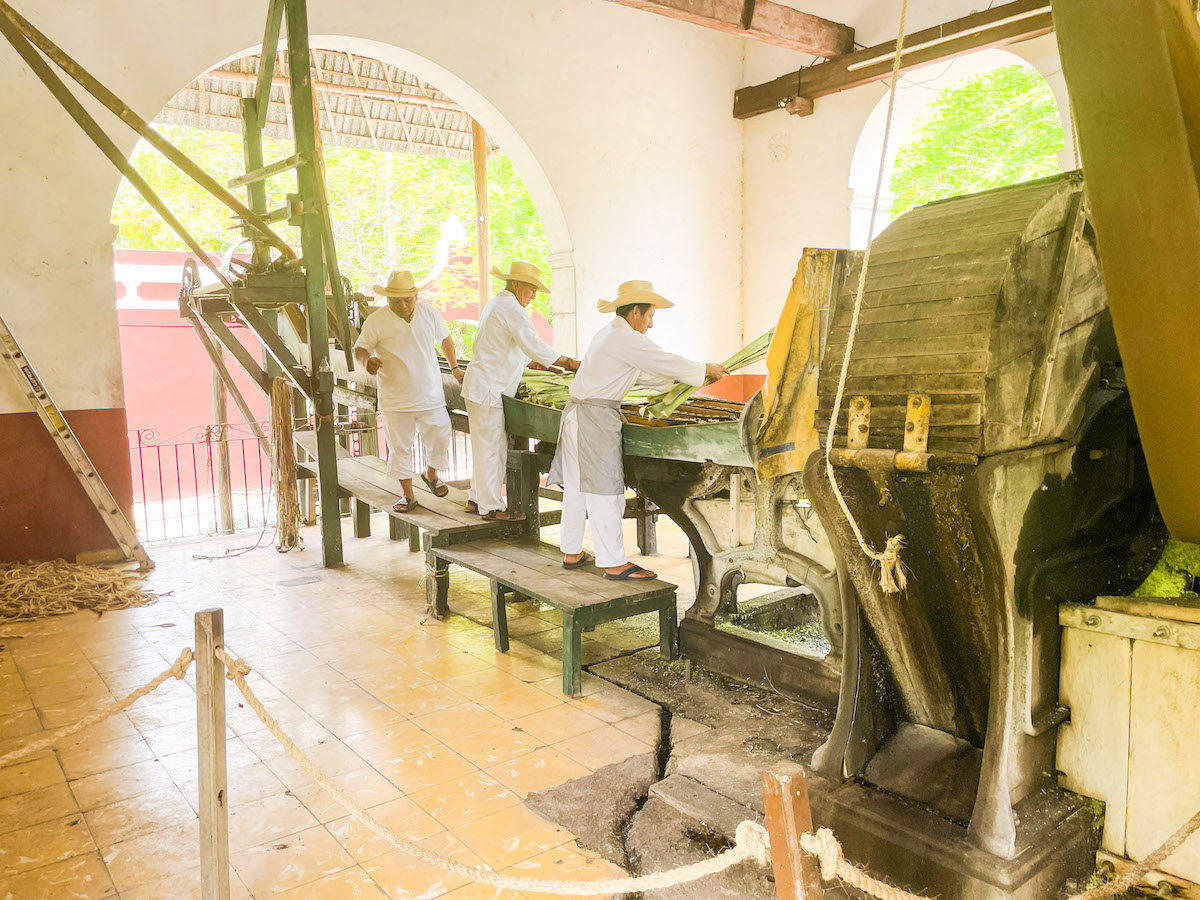
15 Unique Places To Visit Near Merida With a Rental Car (a Local’s Picks)
These 15 unique places to visit near Merida are road-trip worthy gems you can easily drive to if you plan to have a rental car during your trip.
As a Merida local (3 years and counting!), I thought it’d be fun to share a smattering of spots that I wow visiting friends and family when we’re itching to go a little further afield than Merida Centro. So far, everyone’s been fairly impressed by these destinations. Even my discerning French mother-in-law, which is saying a lot!
With its bustling plazas, colonial mansions and popsicle-colored building facades, Merida Centro is indeed a walkable feast. But if you compliment your Merida trip with a rental car, you’ll have the freedom and flexibility to see and do so much more in this vast and vibrant Mexico region. I mean, good luck spotting flamingoes, UNESCO World Heritage Sites, pink salt mines, and pre-Hispanic cave art on Paseo Montejo! Plus, hitting the open road is always filled with the possibility of making fascinating new discoveries.
Some of these unique places to visit near Merida are lesser-known hidden gems, but they still serve up the best of Yucatan. Think Mayan ruins, cenotes, remarkable biodiversity, beautiful beaches, and delectable Yucatecan eats. I even included a waaaay off-the-beaten-path, contemporary architectural masterpiece on this list. I mean, who knew anywhere near Merida even contained such a thing?
From families and couples to solo travelers and friend groups, there’s something here to please every kind of travelers. So gas up and grab the wheel, baby. Time to hit the road!
TABLE OF CONTENTS
Ruta Puuc + Loltún Caves
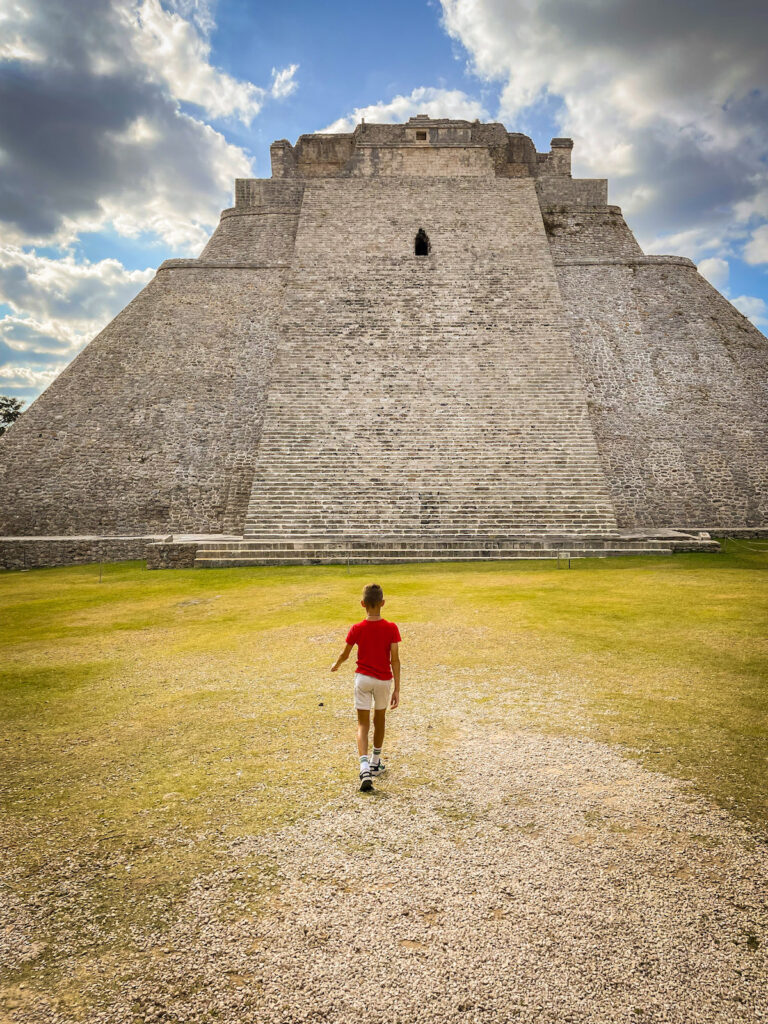
Follow in the footsteps of the ancient Maya along the Ruta Puuc, a driving trail that runs through a rich cluster of ancient Mayan archaeological sites. The route begins an hour outside of Merida, at the extraordinary ancient city of Uxmal, and stretches another 25 miles south until ending at the Loltún Caves. Uxmal, of course, is a designated UNESCO World Heritage Site, but this distinction also extends to several archaeological sites in the Puuc region. The Ruta Puuc is definitely one of the most unique places to visit near Merida. In fact, I’d call it a must!
The ruins along this hilly jungle highway (Puuc means “mound” or “hill” in Maya) are a fascinating glimpse into ancient Mayan civilization. Populous and advanced, the cities of Uxmal, Kabah, Sayil, Xlapak, and Labná thrived thanks to the Maya’s cultural, technical and architectural feats. You’ll see evidence of this in the ornate construction of pyramids, palaces, ball courts, and administrative and religious centers the Maya spread across the region.
At the end of the route lies the Loltún Caves, an anthropological marvel inhabited by hunters and gatherers as far back as 9000 BCE. The extensive cave network runs about 5 miles, although only a little over a mile is open to the public. Beneath the cave’s stalactite-covered ceiling, archaeologists have uncovered Mayan tools, the remains of mammoths and saber-toothed tigers, more than 40 primitive carvings, and 145 painted murals.
The Ruta Puuc is straightforward, well-paved, and the distances between sites is short, so it’s an easy and pleasant drive. It’s possible to drive it in a single day, but I’d advise pacing yourself and maybe spending the night in the region. Sightseeing under the blazing Yucatan sun can really zap your energy! Also, Mani and Tekit, two of Yucatan’s magical towns (pueblos mágicos) are in the region, so you might consider a detour to visit these.
The links I included above will take you directly to the website of INAH, the Mexican National Institute of Anthropology, which is the government agency responsible for maintaining Mexico’s archaeological sties. You’ll find plenty of practical info to help plan your Ruta Puuc road trip, including hours, exact locations and entry fees. And don’t forget to bring cash along for the drive, as many of the smaller archeological sites are cash-only.
Uxmal Video Mapping at Night + Museo Choco-Story
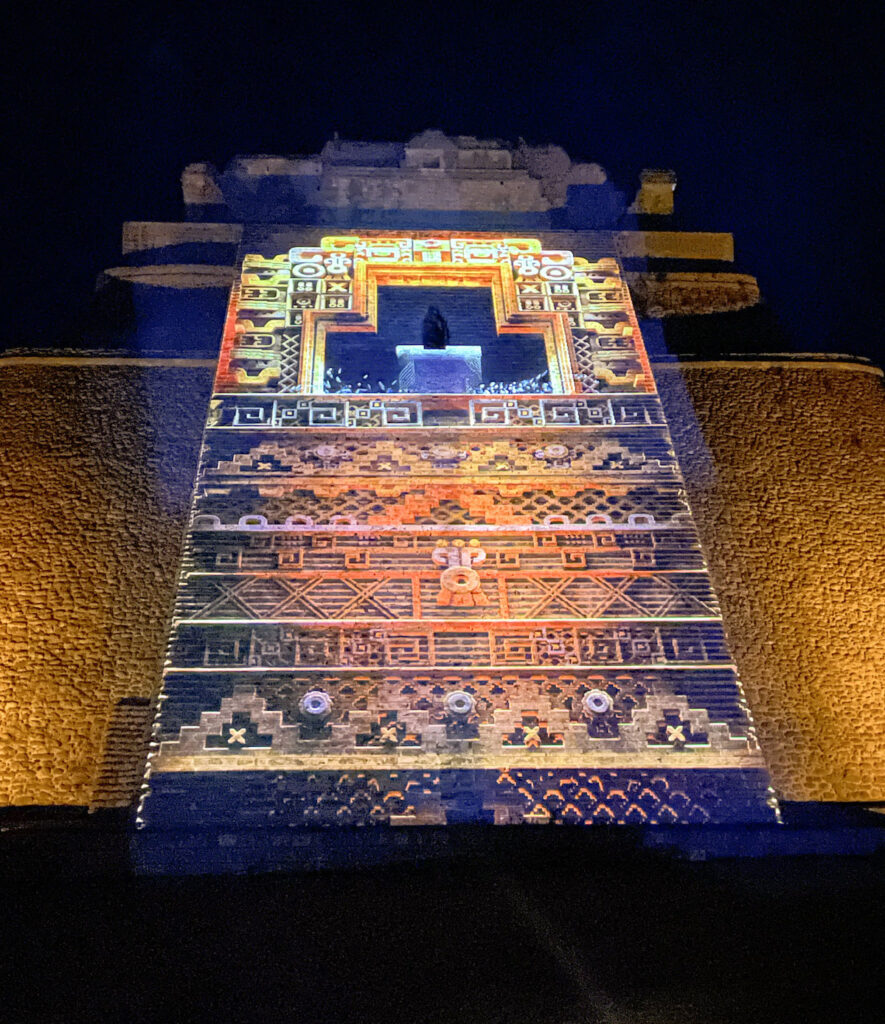
If you thought Uxmal was spectacular by day, wait ’til you see it under the stars. 5 evenings a week, the Uxmal ruins become the backdrop for Echoes of Uxmal (Ecos de Uxmal), a dazzling, 85-minute video mapping spectacle that relates the history, legends and symbolism of Uxmal through projections across the site’s majestic ruins. Immersive lighting, narration and crisp audio bring Uxmal and the nocturnal jungle to life.
Most people explore Uxmal during the day and don’t think about returning at night. But having a rental car gives you the freedom to enjoy this super unique experience. I’ve been to this show a handful of times on my own, and I have local Mexican friends who’ve been just as much. It’s really a cool time. And let me tell you, roaming Mayan ruins in the jungle under the stars is a whole other level of bucket list.
Echoes of Uxmal screens Tuesday, Wednesday, Friday, Saturday, and Sunday — once at 7:30 pm and again at 8:15 pm.
Considering it takes an hour to drive to Uxmal from Merida, I suggest combining Echoes of Uxmal with a late afternoon visit to Choco-Story Museum, which is right next door. They’re literally so close they share a parking lot.
As the name implies, Museo Choco-Story is dedicated to the region’s rich cacao heritage, but it encompasses so much more. Choco-Story hosts several interactive exhibits, reenactments of ancient Mayan ceremonies, chocolate tastings, and there’s an animal rescue sanctuary where you’ll see monkeys, crocodiles, birds, deer, and even a jaguar. If it was up to my son, we’d live a lot closer to Choco-Story so he could feed the spider monkeys every day.
Choco-Story is open from 9 am – 7:30 pm (last entry at 6 pm). Allow yourself at least an hour (if not more) to explore. So you could plan to finish your visit in time for the 7:30 Uxmal show. Or you could stay at Choco-Story until closing time, take a little breather, then attend Uxmal’s 8:15 show.
Here’s the link to book tickets for Echoes of Uxmal.
🚘 DISCOVER CARS IS MY TOP RENTAL CAR PICK 🚘
I’ve voyaged far and wide over the Yucatan Peninsula, and Discover Cars is my top pick when it comes to
the best rental car deals, excellent customer service and lots of vehicle options.
✓ Discover Cars compares prices across several car rental agencies so you can get the best prices.
✓ Discover Cars doesn’t do hidden fees or surprises at check out. All mandatory fees, taxes and extras are included in the final quoted price.
✓ Discover Cars boasts a remarkable 4.7 star rating on Trust Pilot out of a whopping 196,468 reviews (and counting!).
✓ Discover Cars offers FREE cancellations up to 48 hours before your booking.
✓ Select your dates, destination and car, then have your driver’s license, passport, credit card, and reservation voucher ready at the pick-up counter. Easy peasy!
➡️ Ready to road trip? BOOK NOW WITH DISCOVER CARS.
Mayapán
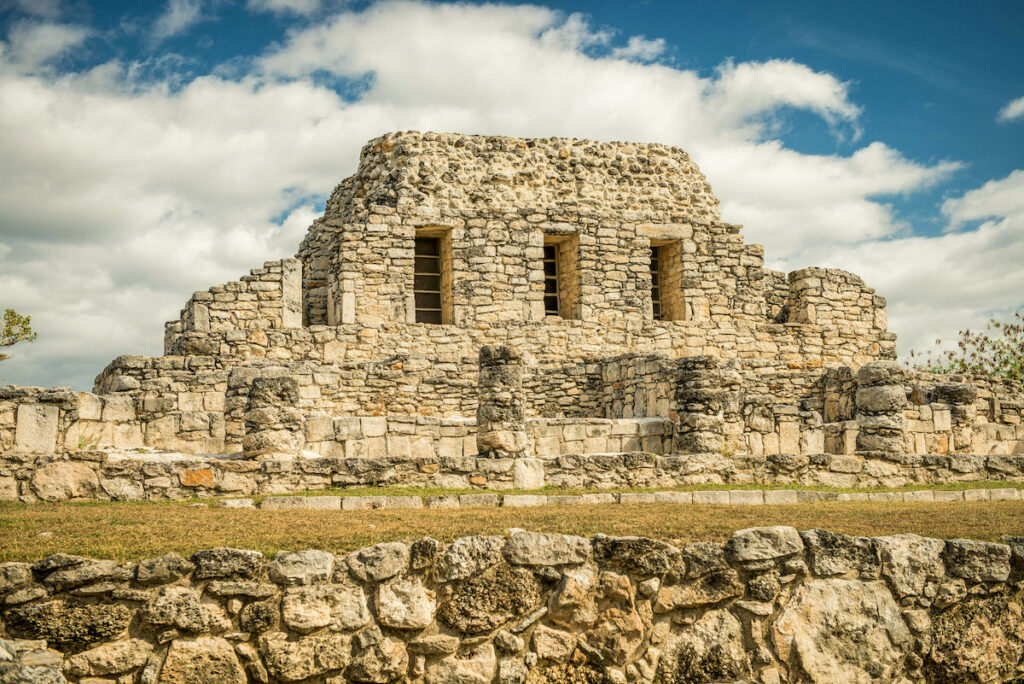
Another unique place to visit near Merida with a rental car is Mayapán, a lesser-known but significant Mayan site that’s 45-minutes south of the city. The name Mayapán is derived from the word Mayab, which was the Maya’s name for the Yucatan Peninsula before the Spanish conquest. It’s a fitting name considering Mayapán was the last great Maya capital in the Yucatan Peninsula until its fall in the 1440s.
Mayapán served as a sort of satellite administrative and religious center for Chichen Itzá. A walled city, it contains over 4,000 structures inside its perimeter. Several of these are small scale replicas of iconic buildings at Chichen Itzá. The Observatory at Mayapán mirrors Chichen Itzá’s own observatory, El Caracol, while Mayapán’s Pyramid of Kukulcan is a scaled-down version of El Castillo.
The ancient Maya decorated their buildings from floor to ceiling with colorful wall murals. Much of this pre-Hispanic artwork has disappeared or degraded over time due to heat and other weather conditions. One of the things that makes Mayapán unique is that some of its wall murals are still intact. If you venture into the aptly-named Hall of the Frescoes, or Temple of the Fisherman, you’ll find paintings on the floors and walls that depict some rather dour scenes related to war and Mayan death cults.
Mayapán is open 7 days from 8 am – 5 pm. Entry is $75 MXN ($3.75).
Hacienda Mucuyché
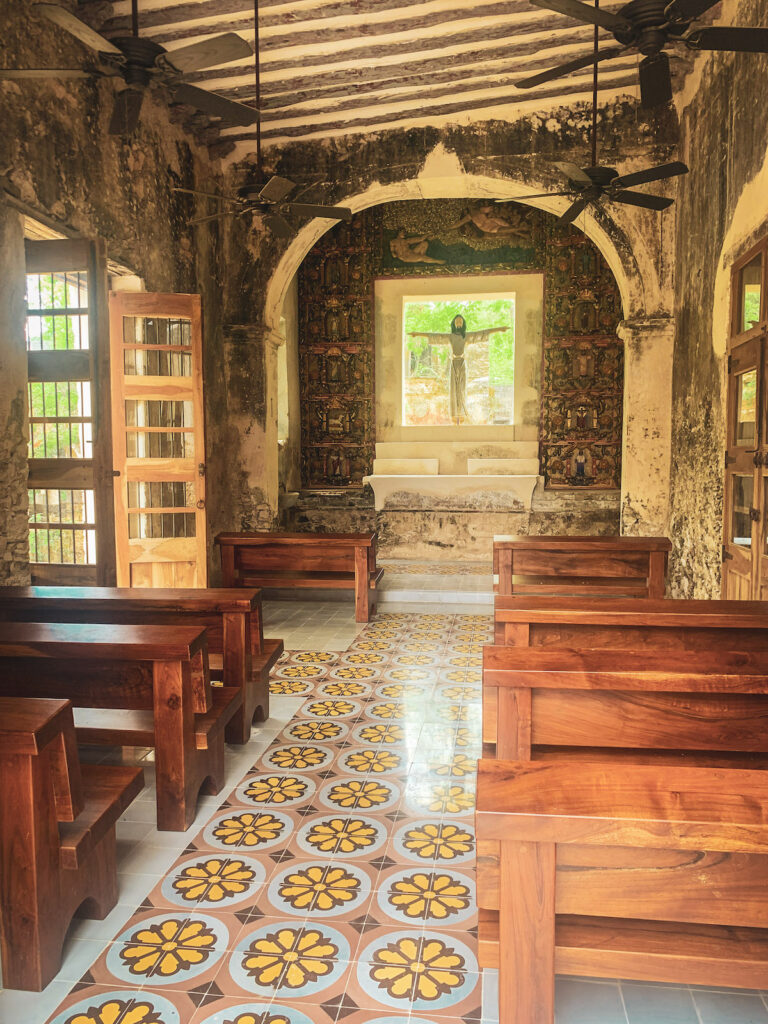
I admit Hacienda Mucuyché isn’t exactly Merida’s best kept secret. The property’s 2 enchanting cenotes, dreamy vine-covered swimming canal, poolside restaurant, and ample cocktail menu make Mucuyché a top Merida tourist spot. I’m definitely not a tourist trap kind of girl, and there’s no denying the whole experience is a little contrived. But dammit if Mucuyché isn’t an insanely fun day out that only gets better sipping on their margaritas.
Mucuyché is only a 20-minute drive down the road from Mayapán, which makes it an excellent place for lunch and a swim after your Mayan adventure. Plus, the cenotes here are the underground cave kind where the ceilings are riddled with stalactites. Excuse my French, but they are truly cool AF.
Otherwise, the grounds are lovely, the facilities well-maintained, the showers and changing rooms are plentiful, and life-jackets for the cenotes are mandatory and provided. Mucuyché requires visitors to take a 2-hour guided tour of the hacienda and cenotes, which must be booked in advance. Tours start every hour on the hour between 9 am – 3 pm.
Just be aware that Mucuyché isn’t the cheapest day out. Adults cost $690 MXN ($34 USD) and children are $420 MXN ($21 USD). Have cash handy to tip your guide as well. Kids under 3 are free.
Las Coloradas + El Cuyo
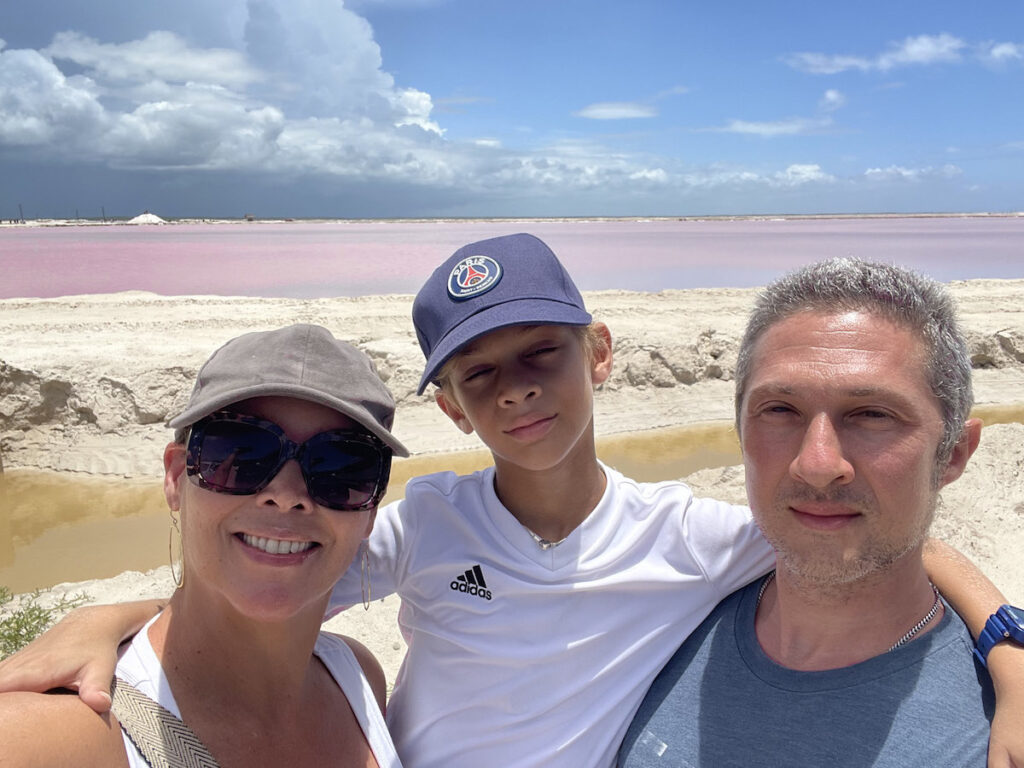
Since we’re on the subject of tourist traps, let’s talk Las Coloradas. You know, the “pink lake” that won’t leave your IG and Pinterest feeds.
Since Mexico opened up to the world during the pandemic, this salt mine in Yucatan (the largest salt mine in all of Mexico, BTW) has enjoyed a shocking amount of social media fame. I wouldn’t go so far as to call the nondescript pueblo its located in a bucket list destination. But if I had a dollar for everyone I’ve met in Merida searching for it I’d probably own the town by now.
I totally get it. It’s not everywhere in the world you come across whimsical waters the color of cotton candy. Which definitely makes Las Coloradas one of the most unique places to visit near Merida. And you’ll definitely need a rental car to get there. Las Coloradas is a 3-hour drive from Merida. That’s a 6-hour round trip!
Since driving 6 hours for a 45 to 90-minute experience is completely wack-a-doodle (you can only take guided tours of Las Coloradas in these time increments — see below), it’s a great idea to pit stop at Las Coloradas while road tripping on your way to a true hidden gem — the sleepy jewel of El Cuyo.
El Cuyo is a magical off-the-grid fishing village that boasts good vibes, virgin beaches, a tight-knit kite-surfing community, and a shockingly delicious food scene. You won’t find any grocery stores, there’s only a singular gas station and good luck pulling this blog post up with the spotty WI-FI. But El Cuyo’s remoteness and tranquility are exactly why it’s a tropical paradise. You can discover everything you need to know about this lush, peaceful Yucatan escape in my Unrivaled Guide to El Cuyo.
I suggest staying in El Cuyo overnight and visiting the Ri Lagartos Biosphere Reserve – where you can catch flamingos! — while you’re in the area.
Now back to those tours of Las Coloradas. Las Coloradas is still an active salt mine with drilling and equipment, which is why tours are required. Currently, there are 3 options:
📌 45-minute tour | $331 MXN
📌 90-minute tour on an all-terrain vehicle | $695 MXN
📌 Bicycle tour | 30-minutes $331 MXN | 60-minutes $356 pesos
Hacienda Teya
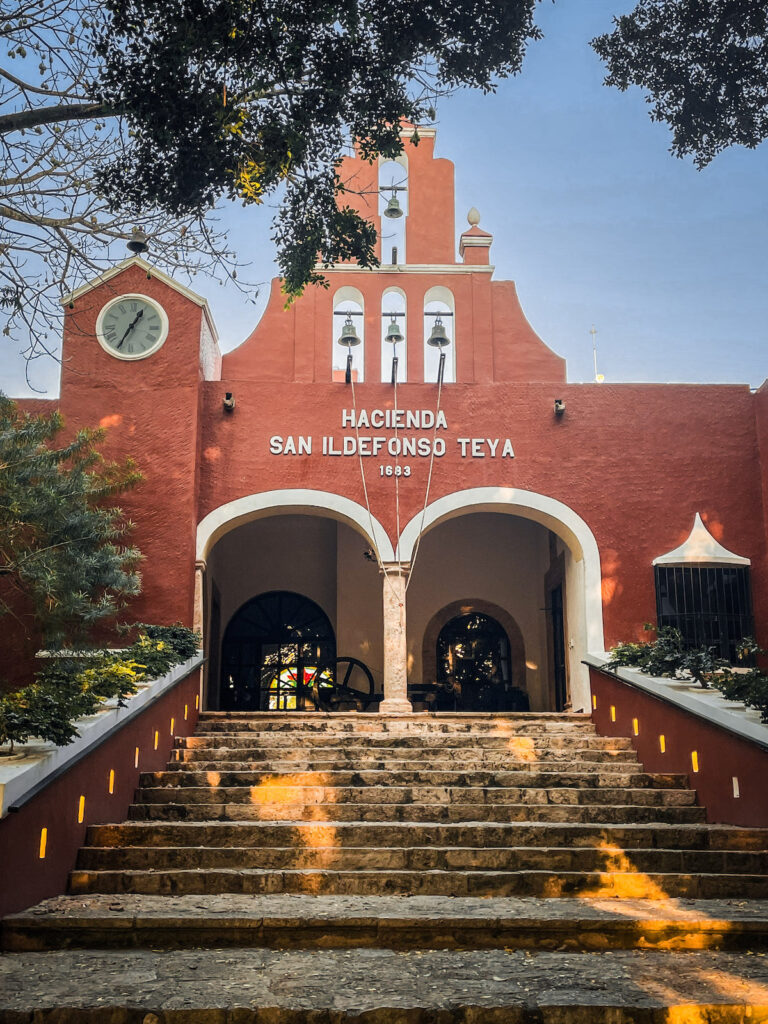
To experience the wonders of Yucatecan gastronomy on the grounds of a restored hacienda where peacocks and deer frolic freely, take a 20-minute ride down Highway 180 to Hacienda Teya. Located inside the 17th-century Hacienda San Ildefonso Teya, the restaurant’s beautiful, old-school dining room features beamed ceilings, tiled floors and arched walkways. The restaurant is generally bustling with locals (always a great sign!) who prefer a more bucolic setting for lingering lunch. There’s also a buzzy modern outpost of Teya in Merida Centro, but dining here, on the grounds of the hacienda, magically transports you back in time.
Teya’s large menu is filled with classic Yucatecan dishes, which I guarantee will be some of the best food you’ll eat in Mexico. If you’re plant-based like me, try the papadzules, a traditional dish made with eggs rolled in tortillas, then smothered in a delicious pumpkin sauce. There’s a vegan version on the menu, too, which is made with calabaza, a kind of local pumpkin. These are soooo good I honestly prefer them to the traditional version.
After lunch, spend some time roaming the grounds and peeking around the old hacienda. There are many cool nooks and crannies to be found, including a ballroom, an inviting swing and one of Merida’s famous white “besos” chairs. Hacienda Teya is great for large groups, or families traveling with children. There’s a swing set to keep little ones busy, and soccer goals at the far end of the hacienda where bigger kids can play.
Reservations for lunch are required. You can make them by WhatsApp at +52 999 368 2726
San Crisanto
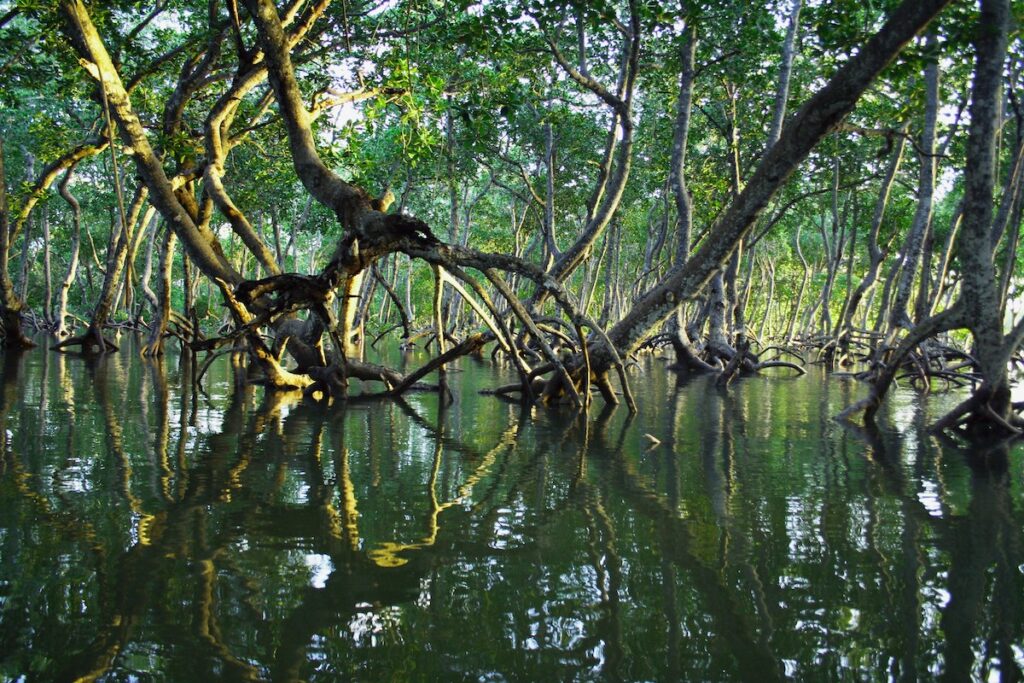
Drive north on the Carretera Merida-Progreso to highway 27, then head east for about an hour along Yucatan’s Emerald Coast until you arrive at San Crisanto. This sunny, beachside fishing village is locally known for its salt production, coconut plantation and wondrous mangroves. Using machetes, enterprising locals carved winding channels throughout the mangroves to reconnect them to the surrounding cenotes after Hurricane Isadore devastated the area in 2002. Now, nature lovers can take eco-friendly tours of the mangroves led by local fisherman on flat-bottomed, gondola-like boats.
Hop on and marvel at the stillness of the jungle as your guide glides you over the water Venice-style, standing while navigating the canal with a long pole. It’s a mystical, 90-minute journey during which you’ll have the chance to see several species of flora and fauna, like lizards, deer, woodpeckers, herons, turtles, crocodiles, and several types of mangroves. Tours culminate with a refreshing dip in a crystalline ojo de agua, or freshwater spring.
San Crisanto’s mangroves are one of the more unique places to visit near Merida, and touring them is a wonderful way to support the local community. To book the tour, go to the office of Manglares de San Crisanto, which is next to the soccer field just off the main road. Pay cash for your tour, which costs $110 MXN ($5.50 USD) per person. You’ll be assigned a guide who you’ll follow to a nearby dock where the tour begins. The office is open from 8 am – 5 pm.
After driving all this way, you definitely want to enjoy San Crisanto’s 2-mile long, powdery sand beach. You can stake out your own patch of sand, or if you prefer simple and cheap facilities like bathrooms and shady palapas, there’s Balneario Zac Ha between San Crisanto and Telchac.
If you lean bougie like me, LOL, go for a posher experience at a local beach club. Komunah Beach Club treats you to loungers, a large beachfront pool in the sand, a restaurant serving food and drinks, and the option to participate in several activities like kayaking, beach volleyball, and yoga. Kokomo Beach Club, where you’ll find many of the same amenities, is another great option in the area. Komunah and Kokomo both require reservations, which you can make on their websites.
Xcambó
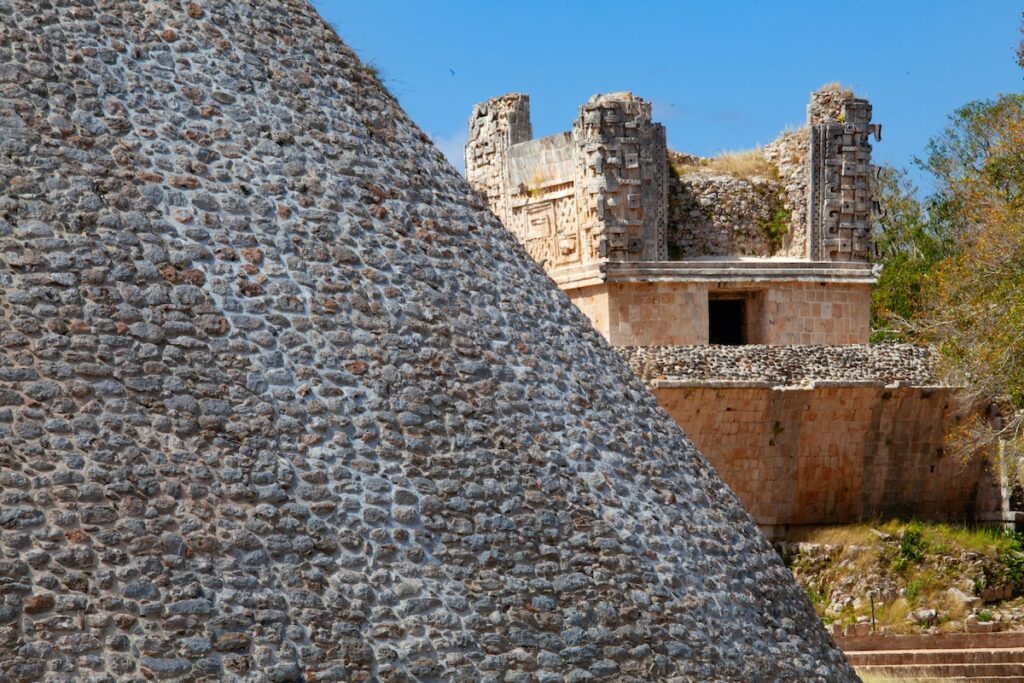
Xcambó is an ancient Mayan city and commercial port that served as an important trading route, particularly for salt, and other products traded by sea. In fact, Xcambó had its own salt mine, which was once considered the most important on the whole Mayan Peninsula.
Inhabited from about 150 BC until 950 CE, Xcambó has some interesting ruins worth seeing. The Pyramid of the Masks, which shares a similar design to Mayan pyramids in nearby Dzibilchaltún and Izamal, is one of the most well known structure on the site. If you’ve got kids, they’ll love being able to scamper up to the pyramid’s flattened top.
Perhaps the most interesting building on the site isn’t actually ancient or Mayan, but modern and Catholic. Locals built the Temple of the Virgin right on top of ruins at Xcambó in the mid-1900s. The temple’s construction is rooted in a local belief that a virgin, who only revealed herself to the faithful, once lived among the ruins.
Located roughly an hour’s drive from downtown Merida, Xcambó is a quiet archaeological site that’s only 3 miles from the beaches of Telchac Puerto. This makes for an easy and tranquil visit you can combine with a trip to the beach.
You have two options for driving to Xcambó. One is to take the Merida-Progreso highway and then enjoy the coastal route headed east. This will give you occasional peeks at the sea, and possibly even flamingos if its the season. (I just spotted a few along this route driving back from a friend’s beach house this weekend). Another option is to drive inland along highway 176, also known as the Motul highway. In my opinion, this route isn’t as scenic (definitely no flamingos), but you’ll shave 10 minutes off your driving time.
Celestún Biosphere Reserve
The Celestún Bisosphere Reserve is absolutely one of the most unique places to visit near Merida. In fact, I’d consider it an obligatory day trip. The Reserve is renowned for its remarkable biodiversity. Spider monkeys, turtles, crocodiles, untold species of birds, and more thrive in its extraordinary estuary. But the big draw here are the glorious throngs of flamingos. Between November and April, flamingos gather in Celestún to feast on the pink algae and briny shrimp that contribute to their vibrant color. That’s not to say you won’t see flamingos in Celestún outside of these months, but there might not be as many.
The coastal town of Celestún is a 90-minute drive in your rental car from Merida. As soon as you cross the bridge from Highway 81 into Celestún, hang a sharp left into the first parking lot. This is where boats depart for tours of the estuary, and you can hire one here for a tour. The going rate for a boat tour is about $3,000 MXN ($150 USD) for a 2-hour tour for up to 6 people. If your group is less than 6, you can do what we did and ask other travelers in the area to split the tour with you so it’s more cost effective. Solo travelers will have luck offering $500 MXN – $600 MXN ($25 – $30 USD) to groups of less than 6 who are looking to complete their boat.
Destino Mio
An hour and 30-minute drive from Merida near the town of Tekit lies the beautiful jungle retreat, Destino Mio. Pitched on the grounds of a former henequen hacienda, Destino Mio is a verdant sanctuary of serenity where you can get away from it all and connect with Mother Nature.
The property boasts 3 cenotes, a lovely vegetable garden you can tour, several high-end suites featuring private pools, a posh glamping area, and a delicious restaurant with a wide-ranging menu, including fancy cocktails. There’s also Utopika spa, a holistic wellness center that offers Temazcal purification rituals and sound baths as well as more traditional facials and massages. You can also opt for an ATV or bicycle tour. If you’re traveling in a large group and feeling extra luxe, the entire main hacienda house is available for stays accommodating up to 14 people.
A great and affordable way to experience this magical escape without committing to an overnight stay is to purchase a day pass. There’s a poolside day pass, which gives you access to the restaurant and grounds for the day, as well as the option to book tours or spa treatments. There are also two spa pass options. You can follow the link to Destino Mio above for more info on booking suites, glamping and day passes.
Hacienda Sotuta de Peon
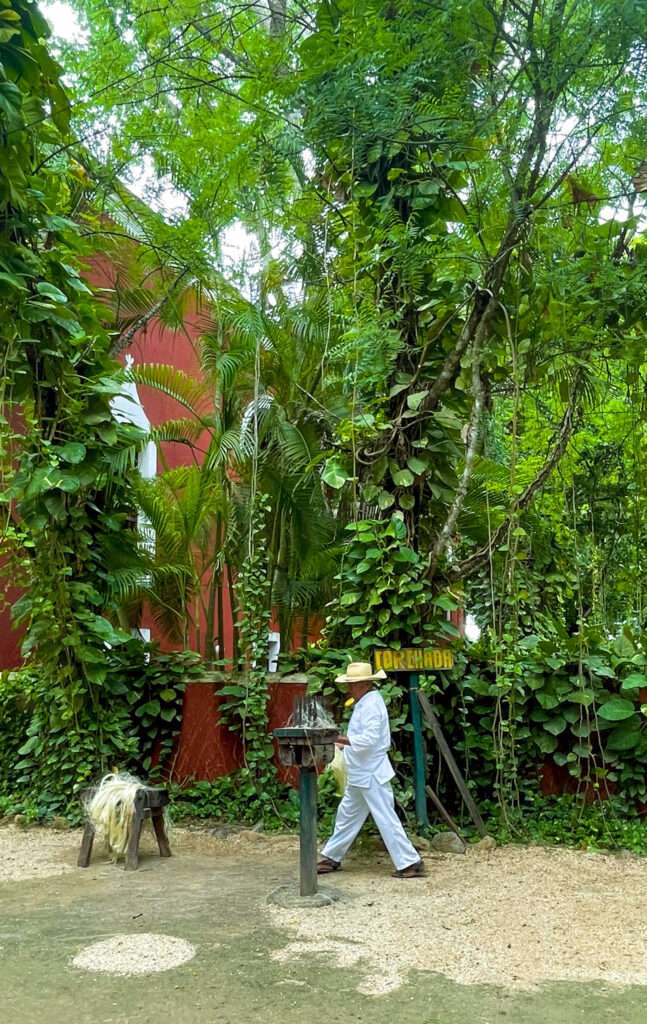
Almost 150 years after it was founded, Hacienda Sotuta de Peon is still manufacturing henequen, the rope-like textile once celebrated as “green gold” for making Yucatan one of the richest places in the world during the 19th century. This means Sotuta de Peon is the only hacienda viva — or working hacienda — that exists in Mexico today, making it an exceptionally unique place to visit near Merida, as well as the whole country. Workers here don traditional traditional dress while using original, century-old machines to process fibers from the agave plant into henequen. Watching this process, along with touring the grounds and hacienda homestead (the latter has been restored to high degree), is an intriguing walk back in time you won’t experience anywhere else in Yucatan.
Surrounded by rolling agave fields a 45-minute drive from Merida, Sotuta de Peon is a great time out. There’s lots to see and do here, from horseback riding and swimming in their private underground cenote, to exploring the grounds by ATV or hitting the spa. There’s even a petting zoo little ones will love. Like many haciendas in Merida, Sotuta de Peon is now a hotel where you can stay the night. But if you prefer to just go for the day, they offer a variety of tours and day passes to enjoy the pool and the grounds.
For everything you need to know about visiting Sotuta de Peon, you can read my in-depth article about how to visit.
Homun Cenotes
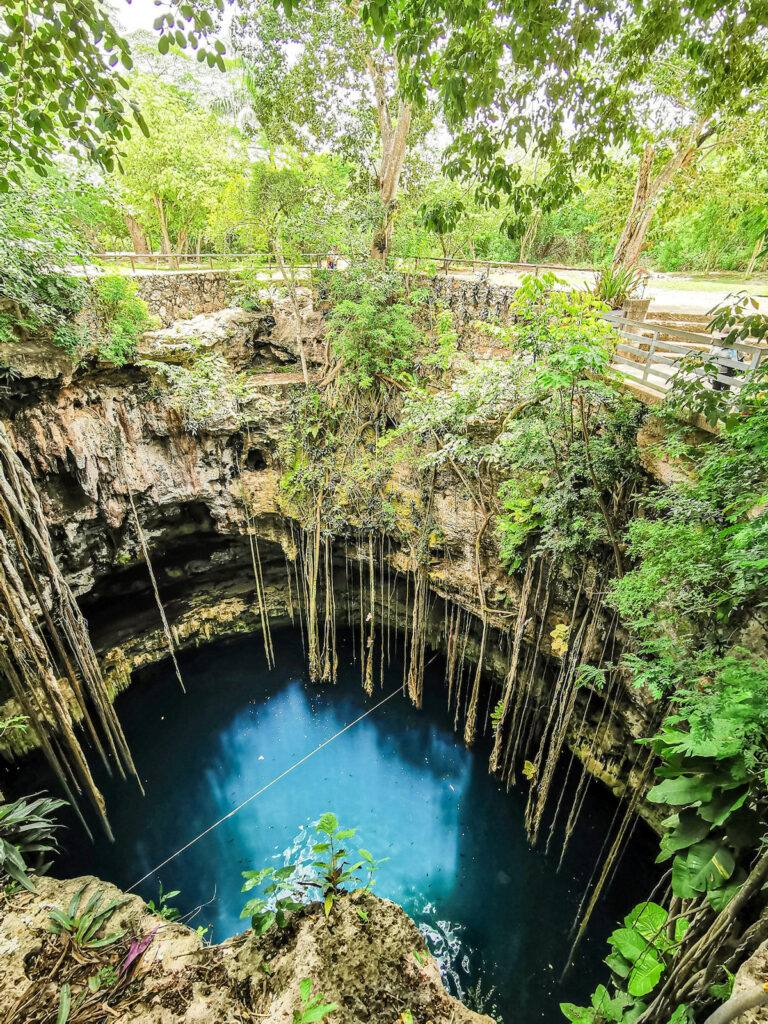
No visit to Merida is complete with cooling off in the surrounding cenotes. These freshwater sinkholes are supplied by water from underground caves that permeate the Yucatan Peninsula’s limestone ground. There are an estimated 10,000 cenotes on the Yucatan Peninsula, with 3,000 located in Yucatan alone.
Homun is a pueblo about an hour southeast of the city, and it’s one of the best places to visit near Merida for cenotes. A whopping 300 cenotes are scattered around the town, with 30 of those accessible to visitors. You’ll find cenotes of all types here — cave-like cenotes, open cenotes and cenotes that are a combination of the two.
When you arrive in Homun, you’ll encounter local guides with motorbikes who can show you around the various cenotes. If you’re traveling solo, or there are just a few of you, you can hop on their bike so they can take you from place to place. But if you’re a larger group, have children or aren’t particularly comfortable being driven by strangers, it’s perfectly fine to follow behind them in your car.
Some of the most famous cenotes in the area are San Isidro, Santa Cruz and the eco-tourism complex of Santa Barbara, which actually comprises 4 cenotes. These are all stunning and totally worth the hype. However, for a more tranquil visit that avoids larger crowds, ask your guide to show your around some lesser-known hidden gems in the area. The grotto of Santa Lucia, the 3 pools at Tres Oches and the subterranean Cenote Pool Uinic, which is on the grounds of a residence, are great places to start.
Plantel Matilde
People. I cannot tell you how overjoyed I am to finally be on the books to visit Plantel Matilde, the monumental architectural masterpiece that is both museum and residential artist colony under the patronage of the Javier Marin Foundation. Hidden away in the verdant Yucatan municipality of Sac Chich, Plantel Matilde is filled with the colossal works of the artist Javier Marin, the renown Mexican sculptor whose large-scale, abstract works have been internationally displayed from Mexico City and Boston to Rome and Seoul.
Designed by Marin’s brother, the architect Arcadio Marin, Plantel Matilde was built in 2020 to be Javier’s personal studio and gallery. The space was also conceptualized as an observatory, with viewpoints that guide your eye to wander over the surrounding plains. With its contemporary, monolithic architecture and striking monumental sculptures, Plantel Matilde is unlike anyplace else you’ll experience in Yucatan.
In general, Plantel Matilde, which is just a 35-minute drive from Merida, is closed to the public. But a little birdie told me that if you email the Foundation it’s possible to book a private tour. So I did and it is! I imagine tours aren’t publicized in order to preserve the meditative nature and creative intentions of the space. So if you’d like to visit, please keep this in mind.
I’ll have mucho mas info to share after my visit next week! But I had to sneak Plantel Matilde in here since it qualifies as one of the most unique places to visit near Merida to a T. Expect a hot-off-the-presses article with loads of practical info on visiting and jaw-dropping pics as soon as I return!
My Top Tips for Driving in Yucatan
🚘 DON’T BE ALARMED BY FIRES ON THE SIDE OF THE ROAD | Yes, you read that correctly. Locals have a (terrible) habit of burning trash, and they also use controlled fires to clear brush. You’ll see fires a lot in rural areas, which die out on their own. You’re in the rainforest Yucatan, where brush generally retains dampness and doesn’t become dry and brittle which spreads fires. I’m from California, where fires mercilessly level entire cities, so I was terrified the first time I saw a roadside on fire. But that’s just how the locals get down here.
🚘 AT GAS STATIONS, ATTENDANTS PUMP YOUR GAS | In Mexico, you don’t pump your own gas. Attendants are employed to do this for you, as well as clean your windshield and fill your tires with air. When you arrive, just roll your window down and tell them which type of gas you want and how much. ALWAYS look at the pump to make sure it is set to zero before pumping begins. Most gas stations take credit cards. However, I’ve had some gas stations refuse my U.S. credit cards, and in remote areas WI-FI can be spotty, so its always best to carry cash.
🚘 GAS UP BEFORE YOU HIT THE ROAD | Don’t leave it to chance that you’ll find a gas station while driving. Especially if you’re headed somewhere more remote like El Cuyo — the last gas station before you get into town is an hour and a half away!
🚘 POLICE CHECKPOINTS ARE A THING | Police checkpoints are common on roads and highways outside of Merida Centro. You’ll know them as you approach when you see lines of orange cones set up on the road, along with slowing traffic, visible police and police cars. For the most part, the checkpoints are there to encourage traffic to slow down, and to spot drunk or dangerous driving. Stay calm and slow down so officers can take a brief look inside your car. I know we’ve all heard the horror stories about police officers in Mexico shaking tourists down in their cars, but the police in Yucatan aren’t really like this. In fact, Yucatan is one of the safest states in Mexico because the police force is very well-paid, and thereby relatively free of corruption. I’ve probably driven through a hundred police checkpoints living here — and many at night — and I’ve never felt uncomfortable or had an issue.
🚘 DON’T EVEN THINK ABOUT DRIVING DRUNK | See above.
🚘 KEEP YOUR RENTAL CAR PAPERWORK WITH YOU AT ALL TIMES | Personal liability car insurance is mandatory in Mexico. You will need to purchase it along with your car rental. And no, your car insurance coverage from home or the car insurance coverage provided by credit cards like Visa won’t cut it. If you find yourself in a fender bender or other situation where car insurance is needed, you’ll need to show your paperwork as proof of insurance. If you don’t have it, you can literally be jailed since not having insurance in Mexico is a crime.
🚘 IF YOU GET INTO AN ACCIDENT, WAIT FOR THE POLICE AND INSURANCE ADJUSTER TO ARRIVE | Unlike in the States, where you can just hop out of your car, exchange insurance info and be on your way, Mexico requires car accident victims to stay on the scene until the insurance adjuster and police arrive. The first thing you’ll want to do after an accident is call the insurance company listed on your rental paperwork. Unfortunately, time isn’t so pressing in this part of the world, so it can take a while for an adjuster to arrive. Just be patient and cooperate when they finally do.
🚘 POTHOLES, SPEED BUMPS & ANIMALS, OH MY! | Be on the lookout for these things everywhere on Mexico’s roads. The infrastructure in many parts of the country is woefully lacking, making potholes a recurring theme anywhere you go. Speed bumps, or topes, are horrendous and everywhere in Mexico. I swear they’re designed to do maximum damage to your car whether you slow down or not. From dogs and deer to snakes and raccoons, animals can pop out of nowhere while you’re driving, especially in rural areas along jungle roads. Driving in Mexico keeps you on your toes, that’s for sure!
🚘 STICK TO TOLL ROADS | Yes, toll roads — cuoatas in Spanish — cost money. But they’re safe, well-paved, will get you there faster, and generally wont’ have furry surprises like the ones I mentioned above.
The Wrap
I hope you enjoy discovering these unique places to visit near Merida with a rental car. And I hope you discover even more hidden gems along the way. If you have any questions about anything on this itinerary, you can always shoot me an email. Otherwise, I’d love to hear all about your Merida adventures in the comments below.
Inspired travels! 💜


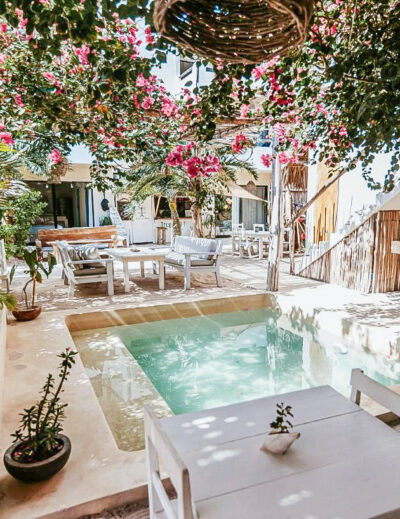
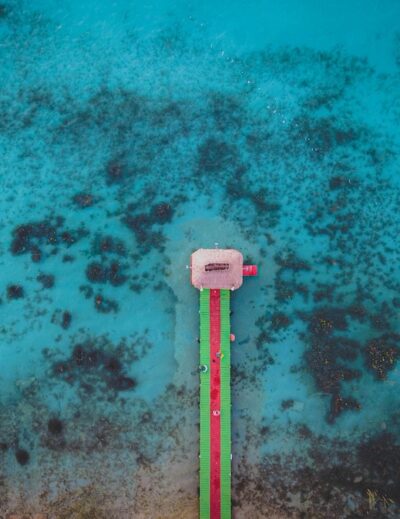
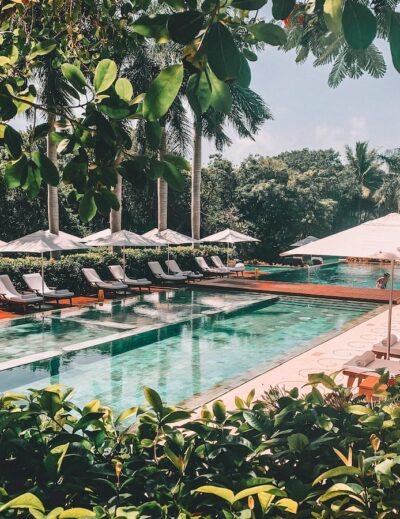
Leave a Reply